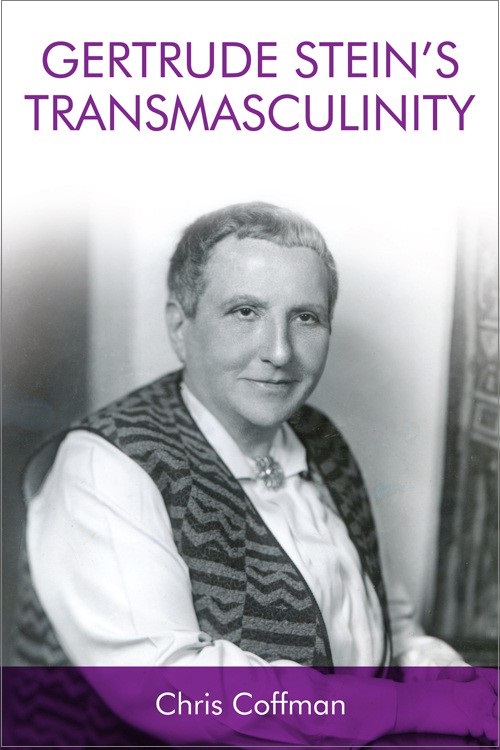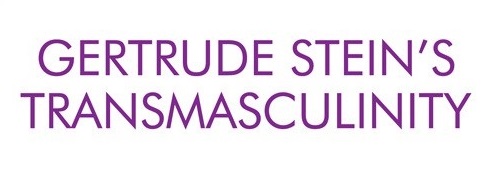
By Chris Coffman
The Parisian salon hosted by Gertrude Stein and Alice B. Toklas was unique among queer modernist spaces. Unlike Natalie Barney’s salon emphasizing women, femininity, and Sapphic identity or the cosmopolitan Paris of queer outcasts surveyed in ‘John’ Radclyffe Hall’s 1928 The Well of Loneliness, Stein’s and Toklas’s avant-garde salon did not take sexual orientation or gender identity as its organizing principle. Their salon was nonetheless a crucial transactional point in the establishment of Stein’s queer persona and her development as an experimental writer. I say ‘persona rather than ‘identity’ not only because of the contemporary significance of ‘queer’ as an anti-identity marker, and not only because ‘queer’ as an indicator of sexual orientation was not deployed in the early twentieth century as it is now, but also because Stein’s and Toklas’s salon did not seek to organise a community defined by a specific sexual orientation or gender identity. Their salon did, however, bring together key avant-garde and modernist innovators, and in so doing, consolidated an aspect of Stein’s subjectivity that served as a conduit for her queerness: her sense of herself as a genius among geniuses.
Stein once wrote of Pablo Picasso, Henri Matisse, and herself that the two men have ‘a maleness that belongs to genius. Moi aussi, perhaps.’[1] Stein’s early association of her ‘genius’ with ‘maleness’ points to the way the salon allowed her to act out – and organise her social and artistic life around – a form of transmasculinity inscribed through homosociality with other ‘geniuses.’ However, Stein eventually came to reject the early twentieth-century gender ideologies that initially attracted her, such as Otto Weininger’s pseudoscientific claims to masculine superiority in Sex and Character (1903). Moreover, as others have shown, ‘genius,’ ‘maleness’ and ‘masculinity’ are not words that point to stable ontologies in her life or writings. Rearticulating ‘genius’ as a form of masculinity that need not be attached to a male body, Stein undercuts its late nineteenth and early twentieth-century association with both maleness and homosexuality.
Signifiers of masculinity persisted throughout Stein’s lifetime, cropping up with various implications not only in her and others’ writing but also in images of her person. In training my lens on signs of Stein’s masculinity, I seek to cast it in a favourable light – as similar, but not identical, to contemporary transmasculinities. Although I do not assert that Stein had we would now call a transgender identity, I do argue that she lived out – and eventually came to articulate – a unique mode of transmasculine subjectivity that enabled her copious literary production as well as her relationships with Toklas and her masculine colleagues.
To do so, Gertrude Stein’s Transmasculinity reads Stein’s writings – and others’ literary and visual texts about her – in ways that illuminate the significance of her varied forms of transmasculinity and masculine homosocial bonds with her colleagues. These ties – and therefore Stein’s transmasculinity – are persistently inscribed as bound up in desire: most obviously, in her sexual desire for the feminine Toklas; less obviously, but equally importantly, in Stein’s homosocial desire for masculine artists and writers. Inscribing her and Toklas’s subjectivities as split, Stein’s texts consistently reveal and respect their author’s masculinity and its embodiment through her desiring relation with her partner, even as her gender shifts in different contexts. Furthermore, her writings register and refract her homosocial desire for male colleagues such as Picasso, Hemingway, Van Vechten, and Sherwood Anderson and for masculine women such as Jane Heap and the Duchess of Clermont-Tonnerre.
[1] See YCAL MSS 76, Box 38, Folder 791 in the Beinecke Rare Book and Manuscript Library, Yale University.

Chris Coffman is Professor of English at the University of Alaska Fairbanks and the author of Gertrude Stein’s Transmasculinity (published by Edinburgh University Press in June 2018).





